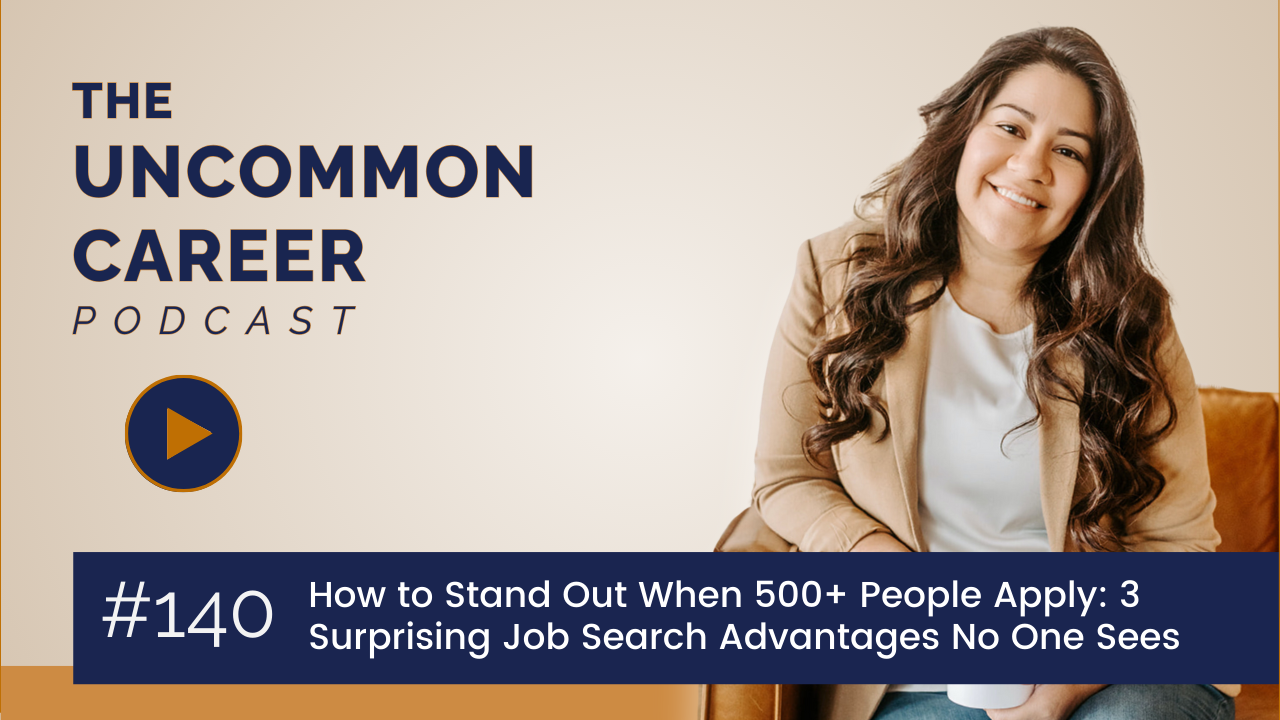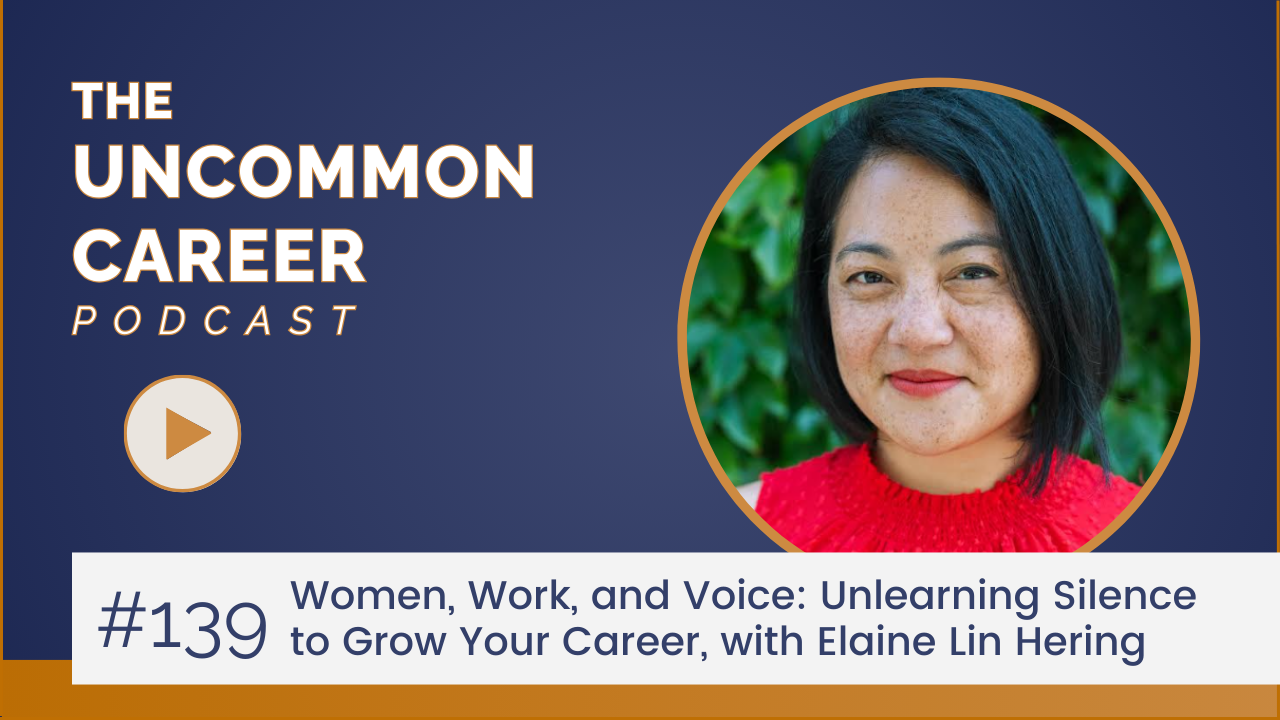135. Leaving Law & Tenure: Redefining Success with Faith and an Entrepreneur Mentality
Oct 28, 2025
Redefine “Success” Without Losing Yourself: Entrepreneurial Thinking for Bold Career Move
Prestige feels safe—law, tenure, the role everyone recognizes on LinkedIn. Yet the story of real growth often begins when the title no longer fits the person wearing it. In a conversation featuring Janine Esbrand, one idea rang loud and clear: nothing is wasted.
Training, past wins, even detours—as long as experience is repurposed with intention, each season funds the next. This guide distills the highest-value lessons: separate identity from job title, think like the CEO of an “economy of one,” hold vision separate from tactics, replace assumptions with evidence, iterate when A + B ≠ C, and move with values that outlast any role.
|
Listen on your favorite podcast app: |
| |
Why Redefining Success Matters (Especially After “Making It”)
Reaching the “top” can reveal an unexpected cliff edge: the title finally matches the résumé, yet the work no longer matches the person. That dissonance isn’t a failure; it’s a signal.
Success must be redefined when metrics (title, tenure, status) stop measuring meaning (growth, integrity, contribution). Treat the discomfort as data. The next definition of success will be clearer and more future-proof if it’s built on values and direction rather than inherited expectations.
Career seasons change; value compounds when transitions are framed as progression—not abandonment—of what came before.
-
Signals to notice: chronic misalignment, growth capped by structure, rising opportunity cost for staying put.
-
Reframing helps: “not leaving a field—carrying expertise to a larger canvas.”
-
Bold moves aren’t betrayals of past effort; they’re investments that unlock dormant value.
-
Entrepreneurial thinking is a career operating system—useful inside companies and beyond.
-
Outcomes deviate from plans; resilience comes from iteration, not certainty.
Identity ≠ Job Title: Untangling the Two
When identity fuses with a role, any change feels like erasure.
The truth is kinder: identity is the person; the role is a platform. Roles change; the person continues—equipped with judgment, ethics, and competence carved by past seasons. Untangling identity from title lowers the psychological “exit cost,” restores permission to explore, and prevents status anxiety from dictating decisions.
This is particularly vital when stepping away from professions with strong social signals (law, academia, medicine). The skill is to honor the old platform while choosing a new one that serves present values and future ambitions.
-
Language to adopt: “the work being done now is a chapter, not the whole book.”
-
Practice: introduce yourself by impact (“builds X outcomes”) before title (“was Y”).
Nothing Is Wasted: Transfer the Toolkit
Training shapes thinking long after the badge changes.
Legal rigor, academic inquiry, clinical discipline—these become cognitive lenses: pattern-spotting, critical questioning, risk sensing, structured judgment. Those lenses continue paying dividends in new contexts: product decisions, client strategy, organizational change, or independent work. The “toolkit mindset” shifts attention from “what is lost” to “what travels well.”
It also makes the pitch easier: rather than justifying a leap, present a portable capability set and the new problems it solves.
-
Translate past roles into portable advantages (e.g., “contract precision” → “decision quality under ambiguity”).
-
Keep a living inventory of transferables: analytical habits, facilitation skills, stakeholder literacy, judgment patterns.
Adopt the Entrepreneur’s Operating System (Inside or Outside a Company)
Entrepreneurial thinking is not limited to founders. It is a practical OS for any professional who wants agency:
-
Own the P&L of your career. The “product” is the value delivered; compensation is payment for that product. Continuously improve features (skills), distribution (networking and visibility), and operations (systems for producing results predictably).
-
Wear more than one hat. Execution, business development, marketing, finance—each matters. In corporate roles, this translates to doing the work and managing the career: scope-setting, storytelling, and opportunity design.
-
Expect market variability. What worked last quarter may flop this quarter. Replace entitlement with iteration. The goal is not to force outcomes; it is to test, learn, and adjust faster than the context changes.
This OS prevents a common stall: waiting for a manager to grant development.
Agency moves development forward even when structures lag.
Separate the “What” From the “How”
Vision collapses when feasibility questions arrive too soon.
The corrective move is sequencing: decide what is wanted before interrogating how to get it. Mixing the two prematurely pushes bold ideas off the table because the “how” isn’t obvious yet. First define the target (kind of impact, scope, rhythms of work, financial range). Then hunt the “how” with research, prototypes, and conversations.
This keeps courage in the room long enough to design strategies worthy of the vision.
-
Guardrails: dream without filtering; plan without fantasy—both are required, in order.
-
Useful question: “If the path were known, would the outcome be worth it?” If yes, pathfinding becomes a solvable project.
Replace Assumptions With Evidence
Career decisions degrade when guided by untested stories (“a pivot means a pay cut,” “this field won’t value my background”). Validate with data: real salary bands, examples of successful transitions, actual skill requirements, market demand signals. Evidence widens options and right-sizes risk. It also quiets the catastrophizing that grows in the absence of facts. Experienced professionals often overestimate downside and underestimate transferability; the cure is not pep talk—it’s proof.
-
Sanity checks: talk with people “near the problem,” not just job titles; compare internal narratives to external realities.
-
Decision hygiene: if a belief steers decisions, attach a source—or downgrade it to a hypothesis and test.
When A + B ≠ C: Iterate Without Self-Condemnation
Entrepreneurial markets are active systems—inputs do not map neatly to outputs.
The same playbook can win in January and whiff in June. Treat variance as feedback, not a verdict on competence. The antidote to shame spirals is a short review loop: what was attempted, what signal came back, and what to try next. Outcome detachment preserves energy, protects identity from one-off results, and keeps experimentation alive.
This mindset travels perfectly into corporate life—projects, launches, hiring cycles—where volatility is the rule, not the exception.
-
Replace “failure” with “sample size.” One result is a data point, not a destiny.
-
Calibrate with peers who’ve seen the cycle; normalize the messy middle.
Build a Career by Values, Not Just by Milestones
Values clarify tradeoffs when the map blurs.
If stability, family rhythms, and creative control outrank prestige, let those criteria govern the next move. Anchoring to values makes exits cleaner and entries calmer. It also reframes “giving something up” as aligning with something better. Values-led decisions age well; status-led decisions often require painful rewrites.
Faith, ethics, and purpose are not soft variables here—they’re stabilizers that keep long-term direction intact while tactics flex.
-
Check alignment: if daily work routinely violates core values, the “cost of staying” is compounding.
-
Say the quiet parts out loud: name the value conflicts; design roles that resolve them.
Practical Ways to Surface and Signal Value (Wherever You Land)
Clarity beats charisma. Make contribution visible and legible wherever the next chapter unfolds.
-
Translate outcomes into business language. Not “worked hard,” but “reduced cycle time 35%” or “lifted retention 8 pts.” Numbers travel; adjectives expire.
-
Tell the story at the right altitude. Result → method → scope. Lead with change created, then explain how, then show scale.
-
Merchandise the work. Share concise updates, not diaries. Visibility is not vanity; it is oxygen for opportunity.
-
Design for repeatability. Convert recurring wins into processes others can run; scalable value gets promoted faster.
Crossroads Without Panic: Courage, Boundaries, and Next Moves
Crossroads feel destabilizing because certainty is scarce and identity feels at stake.
Courage here looks surprisingly ordinary: choose a direction anchored in values; set boundaries that protect energy during the shift; give changes enough runway to produce signal; and capture learnings quickly. Boundaries matter—especially for professionals accustomed to wearing too many hats at once.
Even in seasons of reinvention, a focused “few things done well” outperforms a crowded agenda managed poorly.
-
Boundary examples: limited commitments during transition, clear first-90-day targets, defined scope creep guardrails.
-
Courage is often quiet: a notice submitted, a new introduction made, a portfolio updated—small steps compound.
Careers are not ladders; they are seasons. Titles will change; the person will grow.
Treat every chapter as capital for the next—skills, relationships, judgment—then spend that capital where values and vision converge. Think like a builder: own the product (value), refine the operations (systems), and adapt to the market (iteration).
Separate “what” from “how,” replace assumption with evidence, and let outcomes inform strategy without defining identity. When success is measured by alignment and impact, not just status, the next move stops feeling like a leap and starts feeling like the logical next build.
That is the value-driven path—calm, clear, and compounding over time.













